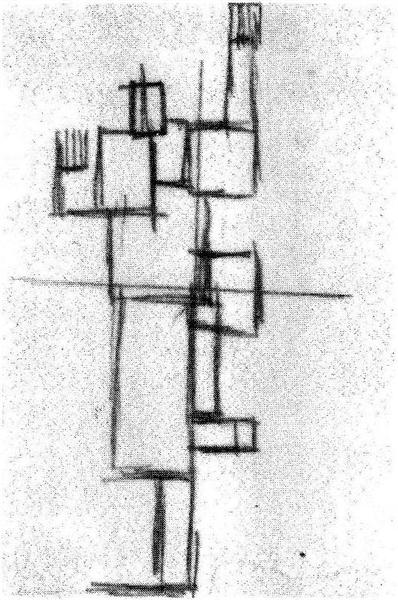Description
The painting "Study of rhythm of a Russian dance" by Theo Van Doesburg, created in 1918, masterfully encapsulates the essence of neoplasticism and the search for a new aesthetic that defined the avant -garde movement in which the artist stood out. Van Doesburg, known for being one of the founders of the Stijl movement, uses in this work its characteristic geometric visual language and the simplification of ways to explore intersections between art, dance and music, all interrelated elements throughout Your career.
In the work, we observe a dynamic network of geometric shapes that are intertwined. Diagonal lines and energetic rectangles give the feeling of movement, suggesting, in their execution, fluidity and rhythm of a dance. This abstract representation is not limited to being a mere illustration of dance, but transcends towards a sensory experience where the viewer can feel the pulse of dance through the visual language of color and shape.
The use of color is particularly remarkable. Van Doesburg chooses a limited but vibrant palette, dominated by red, blue and yellow, along with white and black, emblematic colors of neoplasticism. These saturated tones not only create a visual drama, but also interact with each other, generating their own rhythm in the composition. Each color zone seems to beating alive, in a constant dialogue that reflects the energy of the dance movement that inspires the work.
Unlike other works of his time, such as those of Piet Mondrian, which tend to verticality and balanced asymmetry, "rhythm study of a Russian dance" feels more organic, as if the forms were in constant transformation, capturing a fleeting moment of a performative experience. This gestural and almost kinetic approach offers a fresh and radical look, in which painting becomes a means to express the dynamism of art in motion.
Although the work may not present recognizable characters, its essence is based on the evocation of the body in dance, which suggests that the figurative absence is not a limitation, but a release that allows viewers to project their own interpretations of the rhythm and emotion of dance. This universality highlights the artist's approach to art as an evocative emotional and sensory exploration area.
In the historical context, "study of rhythm of a Russian dance" is erected at a time when Europe experienced drastic cultural and social changes. The work reflects a convergence of influences, from the Russian ballet, which captured the attention of avant -garde artists, to Van Doesburg's own interest in the union of various artistic disciplines. In this sense, the work can be considered a bridge between visual art and performance, a reflection of Van Doesburg's desire to connect different forms of artistic expression in a single cohesive dialogue.
In conclusion, "Russian rhythm study" is a work that encapsulates the search for Theo Van Doesburg for a new way of seeing the world. Its combination of geometric abstraction and color dynamism allows to glimpse an art concept that goes beyond representation; It is a call to experience the rhythm of life itself. Its importance lies not only in its connection with neoplasticism, but also in its ability to cause a visceral response in the viewer, a true testimony of the evolution of art in the twentieth century.
KUADROS ©, a famous paint on your wall.
Hand-made oil painting reproductions, with the quality of professional artists and the distinctive seal of KUADROS ©.
Art reproduction service with satisfaction guarantee. If you are not completely satisfied with the replica of your painting, we refund your money 100%.

